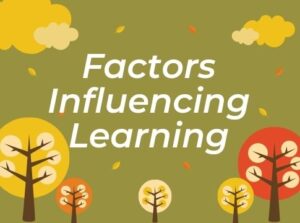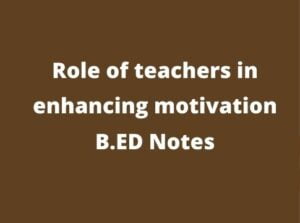Kohler’s learning by insight theory is related to the cognitive type of theory of learning. It was developed by a Gestalt psychologist. This theory is also known as Gestalt’s theory of insightful learning. Insight Learning theory was given by Wolfgang Kohler, Kurt koffka and Max Wertheimer.
This theory implies that when a particular situation is being learnt, it does not help to learn only it in parts but it helps to learn its whole. Learning is an exploration, purposeful and creative activity but not a trial and error method of activity. Learning means, “Reorganization of the perceptual field”. Learning is dependent upon the intelligence of the individuals.
Kohler Learning by Insight theory
Kohler, first of all, used this term (insight) to describe the learning of his apes. In the theory of Learning by insight, Kohler did his experiment on chimpanzees and his name is Sultan.
Kohler conducted many experiments on chimpanzees and brought out a book ‘Mentality of Apes’ in 1925 which was the result of his experiments, conducted during the period 1913-17 on the Canary Island.
Experiment of Kohler Learning by Insight Theory
This experiment shows learning by insight. Some of them are given below-
- In one experiment, Kohler put a chimpanzee (Sultan) inside a cage and a banana was hung from the roof of the cage. A box was placed inside the cage. The Sultan try to reach the banana by jumping but could not succeed. Suddenly, he got an idea and used the box as a jumping platform by placing it just below the hanging banana.
- In another experiment, Kohler made this problem more difficult. Now it required two or three boxes to reach the banana. Moreover, the placing of one box over the other required different specific arrangements.
- In another experiment, the banana was placed outside the cage of the chimpanzee. Two sticks, one larger than the others, were placed inside the cage. One was hollow at one end so that the other stick could be thrust into it to form a longer stick. The banana was so kept that could not be picked up by one of the sticks.
- The chimpanzee first tried these sticks one after another but failed. Suddenly, he got a bright idea. The animal joined the two sticks together and reached the banana. In these experiments, Kohler used many different chimpanzees. Sultan, who was the most intelligent of Kohler’s chimpanzees, could solve all the problems. Other chimpanzees could solve the problems only when they saw the sultan solving them.
- With such experiments, Kohler concluded that in the solution of problems, his apes did not restore to blind trial and error mechanism. They could solve their problem intelligently. Kohler used the term “Insight” to describe the learning of his apes.
Insight involves the following criteria:
- The situation as a whole is perceived by the learner
- The learner tries to see and judge the relationship between various factors involved in the situation
- As a result, the learner is helped in the sudden grasping of the solution of the problem
Gestalt’s Insight learning theory
Gestalt psychologists also did other experiments they found that at some stage there is a new organization of the perceptual field resulting in the sudden discovery of the solution. Therefore, learning according to Gestalt’s is re-structuring the field of perception thought insight. As a whole, insight depends upon the following factors:
Experience: Past experience help in the insightful solution of the problems. A child cannot solve the problems of modern mathematics unless he is well-acquainted with its symbolic language.
Intelligence: Insightful solution depends upon the basic intelligence of the learner. The more intelligent an individual is, the greater will be his insight
Learning Situation: How insightfully the organism will react depends upon the situation in which it has to act. Some situations are more favourable than others for an insightful solution. As a common observation, insight occurs when the learning situation is so arranged that all the necessary aspects are open for observation.
Initial efforts: Insightful learning has to pass through the process of trial and error. But this stage does not last long. These initial efforts, in the form of a simple trial and error mechanism. The open way for insightful learning.
Repetition and Generalization: After having an insightful solution to a particular type of problem, the organism tries to repeat it in another situation, demanding a similar type of solution. The way found in one situation helps him to react insightfully in the other identical situation
How do you apply the Gestalt theory of learning to your classroom teaching?
These are implications of the Gestalt principles in the teaching and learning process-
I. Law of Proximity : Related concepts or lessons should be taught aligned or closely to each other. This is the reason why subtraction is taught after addition, multiplication after subtraction then divi-sion after multiplication. Imagine teaching addition then jumping directly to polygons.
II. Law of Similarity : Similar lessons or contents should be grouped together to make learners develop understanding more efficiently and effectively. This is the reason why lessons are grouped into units: Unit I is for human body, Unit II is for energy and motion, so on and so forth.
Ill. Law of Closure : When a concept or topic is incomplete thus isn’t “closed”, incomplete information may make learners want to discover what’s missing, rather than concentrating on the given instruction. If students find a math algorithm confusing because a
certain question is left unanswered or a step isn’t clear, they will tend to concentrate on that confused part of the process rather than the total process as a whole. This is why students get “lost”‘. Thus, make the lesson complete. Present it clearly, simply and always be ready for students’ clarifications.
IV. Law of Good Continuation : Lessons should be presented in such a way that learners will see these as connected and contin-uous. Now you know why we have the “Review” part of the lesson plan. This way, students will realize that their new lesson actually
has continuity and is related to what they already know or to the previous lesson.
V. Law of Pragnanz : Pragnanz states that when things are grasped as wholes, the minimal amount of energy is exerted in thinking. In short, make your lesson holistic, complete and most of all simple.
VI. Law of Figure/Ground : For a figure to be perceived, it must stand out from the background. Emphasis should be done on important aspects of the lesson. For example, teachers should vary the tone
of their voice or write boldly or underline the important key words of the lesson.
References
- S.K, Mangal. (2007). Essentials of Education Psychology. Prentice-Hall India Learning Private Limited.
- https://bedpsychology.wordpress.com/learning/kohlers/



